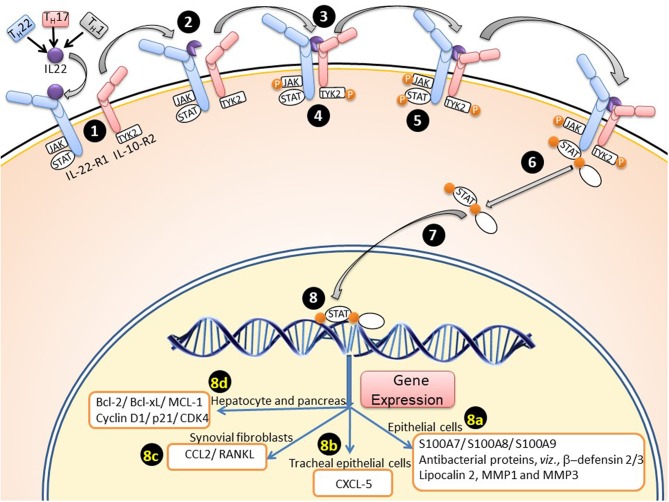Figure 4.
IL-22 signaling pathway for expression of acute phase response proteins. 1. IL-22 receptor is a heterodimer of IL-22R1 and IL-10R2. Initially IL-22 binds to IL-22R1. 2. Upon binding, conformational change in IL-22 enhances its affinity toward IL-10R2. 3. leading to formation of heterodimeric receptor intracellularly, IL-22R1 is associated with JAK1 and STAT3 (STAT3 is recruited through tyrosine-independent recruitment) and IL-10R2 is associated with tyrosine kinase 2 (TYK2). 4. Binding of ligand with receptor initiates the phosphorylation of JAK1 and TYK2. 5. Receptor bound STAT3 is phosphorylated by JAK1. 6. Phosphorylation of STAT3 leads to dimerization of STAT3. 7. Dimerized STAT3 translocates to nucleus; in nucleus, it binds to response elements and regulate associated proteins. 8. STAT3 binds to different genes coding for acute phase proteins by different cells, viz. to viz. a). Epithelial cell (β-defensin 2, β-defensin 3, lipocalin 2, MMP1 and MMP3, S100A7, S100A8, S100A9 b). tracheal epithelial cells (CXCL5); c). synovial fibroblast (CCL2/RANKL); d). hepatic and pancreatic cells (Bcl-2, Bcl-xL, MCL-1, Cyclin D1, p21, CDK4).

